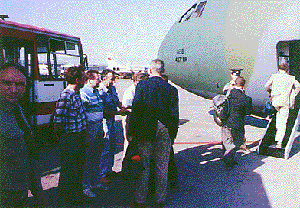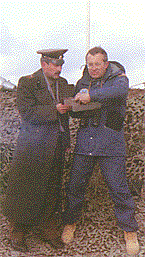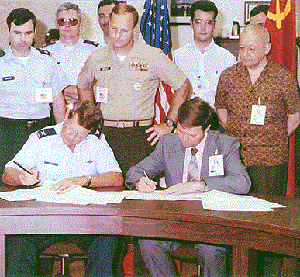| Critical Logistical Infrastructure | ||
| To
complete the INF Treaty baseline inspection record that
far exceeded in number and scope the on-site inspections
used to monitor any other recent arms control treaty or
agreement, the U.S. government relied on the Air Force to
transport American and Soviet inspection and escort
teams. The Military Airlift Command (MAC) used dedicated
aircraft to fly American inspection teams to the
treaty-designated points of entry in the Soviet Union,
East Germany, and Czechoslovakia. The Air Force also
transported Soviet inspectors and American escort teams
from points of entry in the United States and Europe to
declared INF missile operating bases and facilities.28 The flights to and from the Soviet Union were the most frequent and challenging. Because of the short time period for completing the baseline inspections (60 days), the number of Soviet sites (130), and a simultaneous requirement to establish a U.S. portal inspection team in Votkinsk, the Air Force flew transport flights almost daily to and from the Soviet Union. Beginning on July 1, 1988, there were 54 missions in 60 days from Frankfurt to Moscow and 31 missions from Yokota to Ulan-Ude. The Air Force also flew Soviet inspection teams and their American escorts to INF bases and missile sites in the United States and Europe. At OSIA headquarters, Lt. Colonel Gerald Heuer, USAF, and Master Sergeant Wilbur Lewis, Jr., USAF, provided the expertise to initiate, coordinate, and track these military flights. At the culmination of the baseline inspections, the Military Airlift Command had flown 185 INF teams on 114 baseline inspection missions, with a reliability rate of 98.1 percent. This rate meant that only five flights could not be flown as scheduled. The United States met all of its treaty obligations to transport Soviet teams within mandated timeframes. The performance record also established precedents for future arms control treaties.29 |
In Washington, a Soviet team departs for an inspection at Fort Sill, Oklahoma. |


